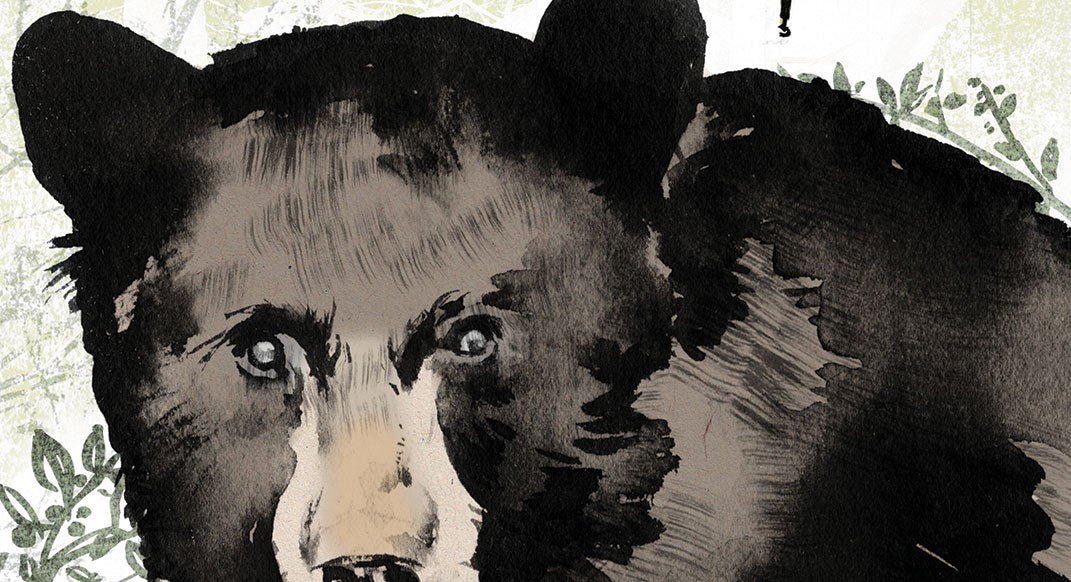Brake for Wildlife

The bear took one big step toward me, stopped and grunted. The gap closed to 15 feet. Maybe 10. I’m not good at estimating distances when enough adrenaline is coursing through my body to power a Seal Team Six raid.
I heard a noise to my side and glanced left. A cub scampered up the nearest tree. My head swung back to the mother.
I’d like to tell you that time slowed down or that my life flashed before my eyes. But none of that happened. I just had one repeating thought.
I am so f–ed.
Running through a patch of tight northern New England brambles, I had stumbled into the backcountry clash feared through the generations.
So this is how it ends, I thought. I’d be just one more name added to the list of 68 fatal maulings by black bears in North America in the last century. A one-paragraph AP story would circulate around the country. My college girlfriend would see it and nod knowingly. Mayer. Exactly what I expected.
I felt a nudge on the back of my leg. My dog, Chloe, was quaking behind me. (When this happens, you can safely assume you are about to be attacked by something large and fierce.) The feel of her wet nose on my leg woke me from my funereal thoughts.
Time to act. I grabbed her collar and started walking slowly backward.
“Everything’s cool. We’re leaving. Sorry, Mom. Eeevvvrything’s cool.”
You are talking to a bear, idiot.
Sixty slow seconds later, as I ghosted backward and the bear slowly lowered her head and resumed her search for berries, the encounter was over.
Home an hour later, and with adrenaline levels finally out of the red zone, I began Googling. Black bears, it seems, rarely attack—even when you accidentally test maternal bonds. Instead, they train their cubs to climb trees for protection. Grizzlies, though, are an entirely different story. Generalize this data to that species, and you risk being posthumously viral on social media.
The bigger danger in New England, I discovered, are moose. There are more moose than bear, so the odds of an encounter are higher, and a moose will aggressively defend a calf.
I flashed back to a story from a friend, Brad, who one fall day was charged by a rutting moose. Brad had to run for a quarter mile from a remote tarn called, ironically, Pond of Safety, to escape. His story sounds laugh-out-loud funny—except when Brad tells it, it’s more of an “Officers used dental records to … ” kind of situation.
Then, later the same week as my bear encounter, something else odd happened. It started when I ran in to visit friends in a backcountry trail crew camped deep in White Mountain National Forest. After a mellow dinner in camp, I told my bear tale.
“Some people go their entire lives without something like that happening,” said the leader of the crew, putting a coda on my mini saga as the sun set.
I took note. Night was falling, I had no headlamp, and I was overstaying the available light. It was time to get up and start hauling ass out of the woods.
How often does that happen, I wondered again, as I hurried down to the trailhead, just a few miles away, maximizing what little post-sunset glow remained.
That’s when I sensed something large blocking the trail. Instinctively, I put my hand out … and hit the ass of a moose.
Too slow to react, I fell forward against my hand, in effect pushing the moose out of the trail. The moose crashed into the forest. I ran past.
How often does that happen? Maybe more often than you might think.
Doug Mayer lives in Randolph, New Hampshire. He appreciates that dumb luck is still luck. This article originally appeared in our October 2016 issue.